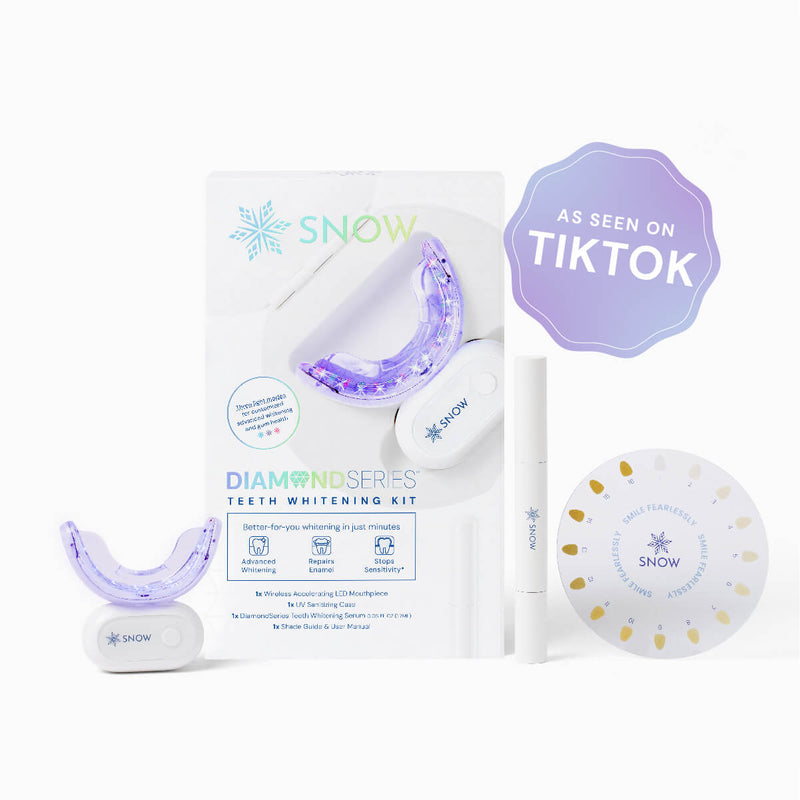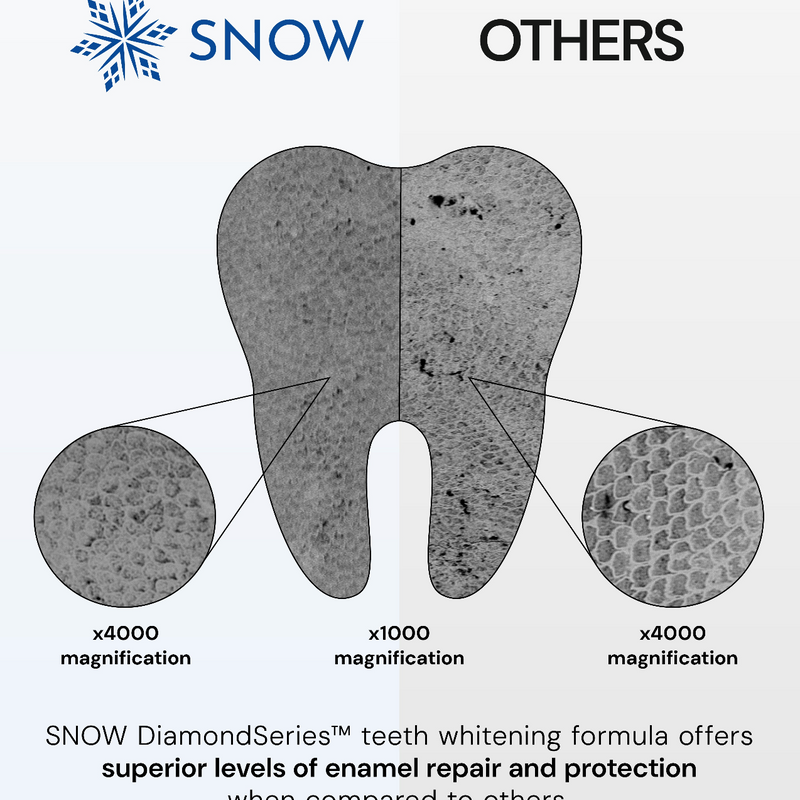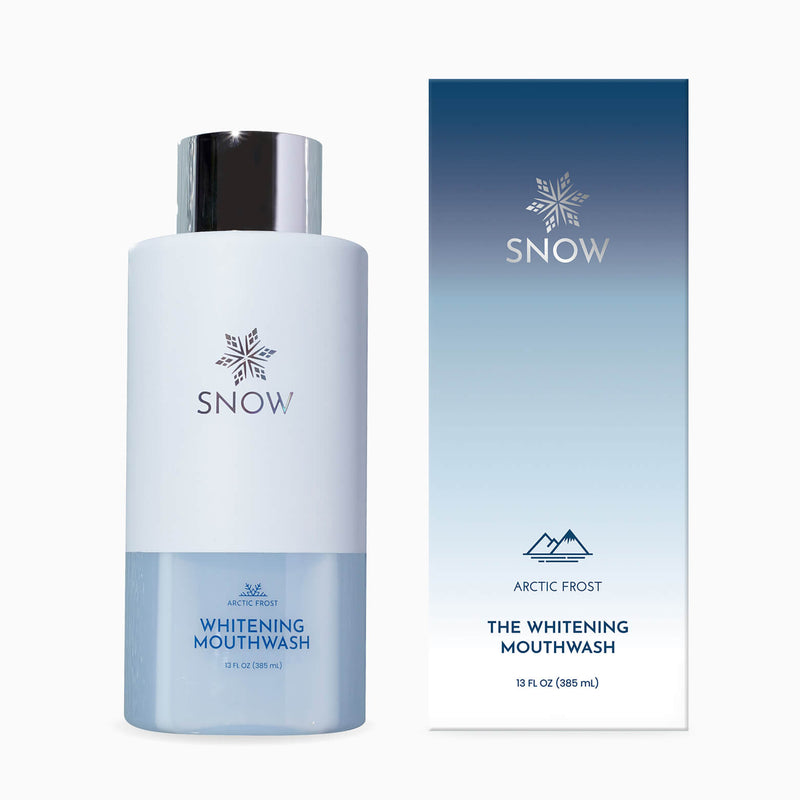Are you considering how to use a water flosser? Not to worry. Using a water flosser is easy.
In this article, we'll walk you through everything you need to know—from filling the reservoir to selecting the right tip and adjusting the pressure settings. We'll also explore how often you should use your water flosser, the benefits it offers, and how to clean and store your kit.
Ready to get started? Let's jump into the details.
What this article covers:
- How to Use Water Flossers
- How Often to Use a Water Flosser
- What Is a Water Flosser?
- Why Is Using a Water Flosser Important?
- Benefits of Water Flossers
- Water Flosser vs. Flossing
- How to Clean a Water Flosser
How to Use Water Flossers
Using a water flosser is a quick and easy way to improve your oral hygiene. Can I use water flosser everyday? Definitely. We suggest it. With this in mind, we'll cover the basics so you can get the most out of your flosser.
Fill The Reservoir
The first step is to fill the reservoir with lukewarm water. This is important because using cold water can sometimes be uncomfortable, especially for those with sensitive gums.
Just remove the reservoir from your kit, fill it up to the indicated max line, and make sure it's securely placed back before you begin.
For an added boost, some people like to mix a small amount of mouthwash into the water for a fresher experience.
For a highly effective water flosser, consider trying the SNOW Water Flosser. It features three adjustable pressure modes, making it gentle on gums and effective in removing plaque.
With a compact, collapsible 8 oz water tank and a rechargeable battery that lasts up to 70 uses, it's ideal for both daily use and travel.
Select A Tip
Choosing the right tip for your water flosser can feel like picking the right tool for the job. Got braces? There's an orthodontic tip designed just for that. Have sensitive gums? Try the gentler tip to avoid any discomfort.
If you're just starting out, we suggest sticking with the standard tip until you're more familiar with your flosser.
Once you've picked your tip, simply snap it into place. It should feel secure, but if it's a little loose, double-check that it's attached correctly.
You can always switch things up later if you need something more specific for areas like implants or bridges.
Pick Your Pressure Setting
Now that you've got the tip ready, let's talk about pressure settings. If you're new to using a water flosser, start on the lower end of the pressure scale to help your gums get used to the sensation.
As you get more comfortable, increase the pressure to suit your needs. Remember, higher isn't always better—find a setting that feels good for your gums and gives you the clean you're looking for.
Position The Water Flosser
Positioning your water flosser correctly makes all the difference. Hold the tip at a 90-degree angle to your gumline and let the water stream do its work.
Move Across The Gumline
Now that you've got everything set up, it's time to start moving the water flosser across your gumline. Glide the stream along your gums, pausing briefly between each tooth to dislodge any food particles or plaque hiding there.
Clean And Store
After flossing, it's important to give your water flosser some care. Start by emptying the reservoir and rinsing it with warm water to keep bacteria from building up inside.
Remove the tip and rinse it separately to ensure everything stays clean for the next use. Once all the components are rinsed, store your water flosser in a dry place.

How Often to Use a Water Flosser
When it comes to how often should you water floss, we recommend using a water flosser once a day, especially in the evening, to ensure you're clearing out any food particles or plaque that have built up throughout the day.
If you have braces, implants, or sensitive gums, using your water flosser more often, like after meals, may help keep your mouth cleaner.
What Is a Water Flosser?
Instead of using string floss, this handy tool shoots a stream of water that helps clean between your teeth and along the gum line.
Looking to pair your flosser with traditional floss? The SNOW Activated Charcoal Whitening Floss is a great addition. Made from bamboo fibers and activated charcoal, it effectively cleans between teeth while helping to whiten them.
Why Is Using a Water Flosser Important?
Using a water flosser helps to prevent issues like gum disease and cavities.
The steady stream of water can reach areas your toothbrush can't, reducing plaque buildup and promoting healthier gums overall.
Benefits of Water Flossers
Our research indicates that using a water flosser has some great perks. One of the biggest benefits is how well it removes food particles and plaque from between your teeth and along the gumline.
Plus, water flossers can be gentler on sensitive gums, making it easier to clean without irritation.
For an extra boost to your oral health routine, you can also try the SNOW Arctic Frost teeth whitening mouthwash. This alcohol-free formula not only freshens breath but whitens teeth while protecting against harmful bacteria.
Water Flosser vs. Flossing
So, what's better: water flossers or traditional floss? Both have their advantages.
Traditional floss is great for scraping away plaque between tight spaces. However, if you struggle with using floss, a water flosser can be a fantastic alternative.

For those looking for an eco-friendly flossing option, the SNOW Charcoal Whitening Floss Picks provide a dual-action cleaning and whitening experience.
How to Clean a Water Flosser
Wondering how to clean water flosser? After each use, it's important to clean your water flosser to keep it functioning properly.
Start by emptying the water reservoir and rinsing it with warm water. Remove the tip and rinse it separately. Once a week, give the water reservoir and tips a deeper clean by soaking them in a mild disinfectant.
Let everything air dry completely before reassembling the device.Based on our observations, regular cleaning extends the life of your water flosser and keeps it safe for daily use.
Conclusion
Our findings show that water flossers are a great tool for keeping your mouth clean and healthy.
Throughout this article, we've covered how to use a water flosser, different settings, and the benefits of adding one to your daily hygiene. We also discussed why water flossing is important for maintaining gum health and compared it with traditional flossing.
Ready to elevate your oral care? Try a water flosser from SNOW. They are designed to make flossing easier and more effective. Grab yours today.
If you want to learn more, why not check out these articles below:
- Can a Water Flosser Remove Tartar
- Can You Put Mouthwash in a Water Flosser
- Best Toothpaste for Thyroid Patients
- Best Toothpaste for Smokers and Coffee Drinkers
- Best Toothpaste for Damaged Teeth
- Best Water Flosser
- Best Dental Floss
- Best Portable Water Flosser
- Best Travel Water Flosser
- When Is the Best Time to Floss
- Dental Tape vs Floss
- Dental Pick vs Floss
- Air Floss vs Water Floss
- Why Does My Floss Smell Bad?
- Why is Flossing Important?

























